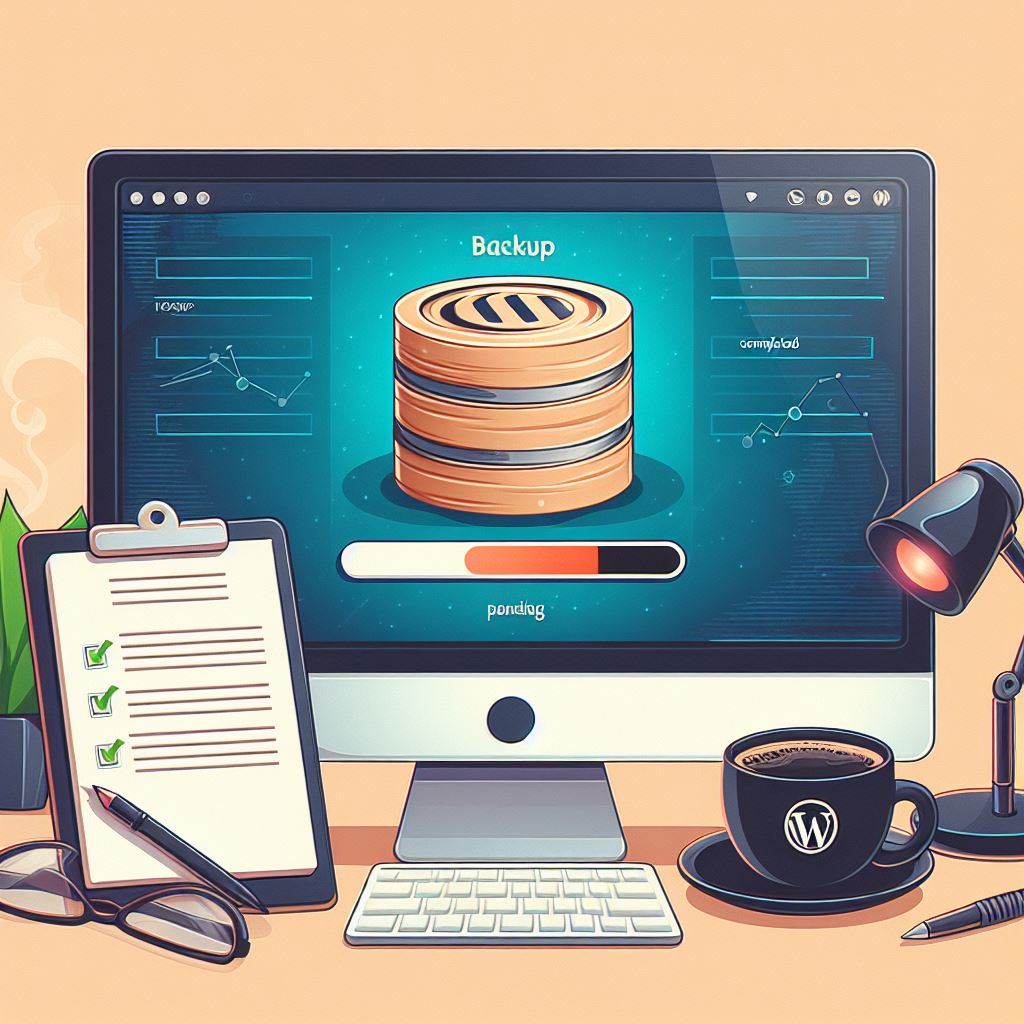Backing up your WordPress site is a crucial step in ensuring the security and integrity of your website’s data. There are multiple methods to back up your WordPress site, including using plugins, manual methods, or a combination of both. Here, I’ll guide you how to backup WordPress site:
Method 1: Using a WordPress Backup Plugin (e.g., UpdraftPlus):
Step 1: Install and Activate UpdraftPlus:
- Log in to your WordPress dashboard.
- Navigate to “Plugins” > “Add New.”
- Search for “UpdraftPlus” and click “Install Now.”
- Once installed, click “Activate” to activate the plugin.
Step 2: Configure UpdraftPlus Settings:
- After activation, go to “Settings” > “UpdraftPlus Backups.”
- Click on the “Settings” tab.
- Configure your backup settings, including backup schedule, retention period, and storage location. You can choose a remote storage service like Google Drive, Dropbox, or FTP.
Step 3: Initiate a Manual Backup:
- On the UpdraftPlus settings page, click the “Backup Now” button to initiate an immediate backup.
- UpdraftPlus will start the backup process, and you can monitor the progress.
Step 4: Download and Store Backup:
- Once the backup is complete, you’ll see the backup sets listed.
- Click on the “Download” button to save the backup files to your local device.
- Store the downloaded backup files in a secure location, preferably an external drive or cloud storage.
Method 2: Manual Backup via cPanel:
Step 1: Access cPanel:
- Log in to your hosting account.
- Locate and access cPanel.
Step 2: Navigate to File Manager:
- In cPanel, find and click on the “File Manager” option.
Step 3: Locate WordPress Files:
- Navigate to the directory where your WordPress files are stored (usually in the “public_html” folder).
Step 4: Select and Compress Files:
- Select all files (Ctrl + A or Command + A).
- Right-click and choose the “Compress” or “Compress Files” option.
Step 5: Download and Store Backup:
- After compression, right-click on the newly created zip file.
- Choose “Download” to save the compressed backup file to your local device.
- Store the downloaded backup file securely.
Additional Tips:
- Database Backup:
- For a complete backup, also consider exporting your WordPress database using tools like phpMyAdmin in cPanel.
- Regular Backups:
- Schedule regular backups, especially before major updates or changes to your website.
- Offsite Storage:
- Store backups in an offsite location (cloud storage or an external drive) for added security.
By following these steps, you’ll have a reliable backup of your WordPress site, ensuring you can restore your website swiftly in case of any issues or data loss.
How to backup WordPress site without plugin
Backing up your WordPress site without using a plugin involves a manual approach, typically through your hosting control panel (e.g., cPanel). Follow these step-by-step instructions to create a manual backup:
Step 1: Access Your Hosting Control Panel
Log in to your hosting account and locate the control panel. Most commonly, cPanel is used, but the steps may vary slightly depending on your hosting provider.
Step 2: Navigate to File Manager
Once in your control panel, find and click on the “File Manager” or a similar option. This tool allows you to manage the files and directories on your server.
Step 3: Locate Your WordPress Files
In the File Manager, navigate to the root directory where your WordPress files are stored. This is often the “public_html” folder or a folder with your domain name.
Step 4: Select All Files
Click on the first file, then scroll to the bottom, hold down the “Shift” key, and click the last file to select all files. Alternatively, you can use “Ctrl + A” (Windows) or “Command + A” (Mac) to select all files.
Step 5: Compress Files
After selecting all files, right-click on any of the selected files and choose the “Compress” or “Compress Files” option. This action will create a compressed archive (e.g., a zip file) containing all your WordPress files.
Step 6: Download the Backup
Once the compression is complete, right-click on the newly created zip file and choose the “Download” option. Save the backup file to your local device.
Step 7: Store Backup Securely
It’s crucial to store your backup in a secure location. Consider using cloud storage services like Google Drive, Dropbox, or an external hard drive. This ensures that your backup is easily accessible and safe from potential server issues.
Important Notes:
- Database Backup:
- While the above steps cover files, it’s essential to separately backup your WordPress database. In your hosting control panel, locate the database management tool (usually phpMyAdmin) and export your WordPress database.
- Regular Backup Schedule:
- Set a schedule for regular manual backups, especially before making significant changes to your website, such as theme or plugin updates.
- Documentation:
- Keep a record of the backup process, including dates and any specific details, for future reference.

